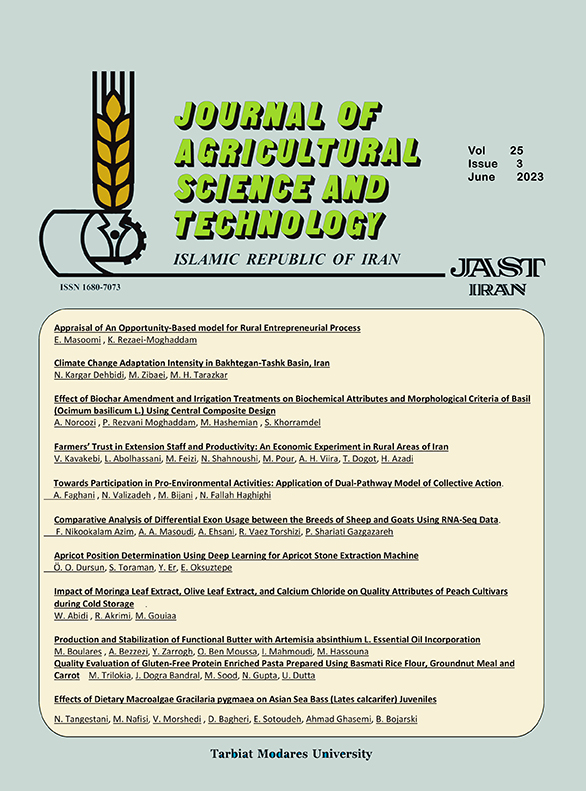Ver ítem
- xmlui.general.dspace_homeCentros Regionales y EEAsCentro Regional Mendoza - San JuanEEA JunínArtículos científicosxmlui.ArtifactBrowser.ItemViewer.trail
- Inicio
- Centros Regionales y EEAs
- Centro Regional Mendoza - San Juan
- EEA Junín
- Artículos científicos
- Ver ítem
Fruit Characteristics and a Simple Estimate of Oil Content in Twenty-Six Olive Genotypes in Argentina
Resumen
There are more than two thousand varieties of olives grown worldwide, most of them native to the Mediterranean Region. However, in Argentina, only a small number of olive varieties are cultivated. In Mendoza Province, there is a collection of olive varieties that includes more than seventy accessions; nevertheless, little is known about the adaptation of the different varieties to the province’s arid conditions. The aims of this work were to evaluate
[ver mas...]
There are more than two thousand varieties of olives grown worldwide, most of them native to the Mediterranean Region. However, in Argentina, only a small number of olive varieties are cultivated. In Mendoza Province, there is a collection of olive varieties that includes more than seventy accessions; nevertheless, little is known about the adaptation of the different varieties to the province’s arid conditions. The aims of this work were to evaluate fruit characteristics of agronomic importance in 26 olive accessions of the germplasm collection and to compare the fruit characteristics of local variety ‘Arauco’ in different environments and growing seasons in Mendoza. In addition, an economic, quick, and easy method to estimate fruit oil content was calibrated and validated using a wide range of olive varieties. Varieties and years showed significant (P≤ 0.01) differences for all the evaluated characteristics. Fruit oil content was closely and positively related to pulp dry weight (y= -0.05+0.56x; r= 0.99). The varieties highlighted from the collection for their high fruit oil concentration in fresh base and low moisture were ‘Canino’, ‘Cornezuelo’, ‘Cucci’, ‘Dritta’, ‘Dulzal’, ‘Farga’, ‘Frantoio’, ‘Grappollo’, ‘Nebbio’, ‘Picual’, and ‘Villalonga’. Additionally, all fruit characteristics evaluated in ‘Arauco’ were similar among the studied environments and were significantly (P≤ 0.01) influenced by seasonal conditions. The proposed model, calibrated and validated with independent data, would allow determining the best harvest time simply from pulp dry weight as model input, determining oil content and analyzing several samples in a short period of time.
[Cerrar]

Fuente
Journal of Agricultural Science and Technology 23 (3) : 617-629. (2021)
Fecha
2021
Editorial
Tarbiat Modares University
ISSN
1680-7073
2345-3737
2345-3737
Formato
pdf
Tipo de documento
artículo
Palabras Claves
Derechos de acceso
Abierto
 Excepto donde se diga explicitamente, este item se publica bajo la siguiente descripción: Creative Commons Attribution-NonCommercial-ShareAlike 2.5 Unported (CC BY-NC-SA 2.5)
Excepto donde se diga explicitamente, este item se publica bajo la siguiente descripción: Creative Commons Attribution-NonCommercial-ShareAlike 2.5 Unported (CC BY-NC-SA 2.5)


